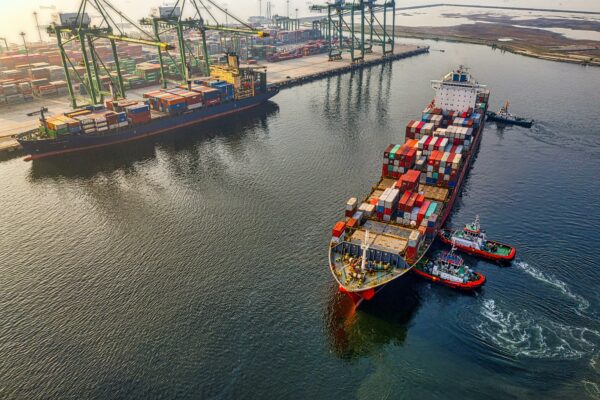Why now is the time for agile inventory management
Apr 03, 2023
Scroll to find out more
Apr 03, 2023
Scroll to find out more

Inventory management has always been a moving target, ensuring that the right products are available at the right time and in the right quantities without holding too much stock. However, in the recent years of supply chain disruptions and economic volatility, getting the balance right has been harder than ever.
Intimately tied in with demand forecasts, inventory management has to deal with the essential challenge of much of supply chain planning – plans are made months in advance based on the best data available, and much can change in that time. The pandemic era consumption-boom saw many retailers struggling to source enough stock to meet home-bound consumers’ demand for furniture, gadgets and homewares while origin production was struggling. However, by the time orders evened out and stock levels returned to normal, demand had dropped off a cliff, leaving many retailers worryingly overstocked at the end of 2022.
Brands now face the challenge of cutting costs and moving excess stock in the face of sluggish demand, while also planning for restocking later in 2023. To make sense of the inventory landscape and how inventory strategies are evolving, we sat down with Haukur Hannesson, CEO at AGR Dynamics on our podcast Freight to the Point to plot a path through restocking and an agile future.
Inventory has always been a challenge for retailers – balancing supply and demand, costs, and customer satisfaction requires accurately predicting customer demand, managing lead times and warehouse space. Holding too much stock ties up working capital and risks having to sell at a discount; holding too little leads to stockouts, lost revenue and unhappy customers.
Threading this needle is the essential task of supply chains, and while businesses have struggled and even gone under from falling behind on this task in the past, the challenge has now moved to the fore of the conversation. Part of the reason lies with the volatility demand discussed earlier, but much of the pressure now comes from a simple question of costs and inflation.
‘Costs are rising and it’s having a different impact on different product groups and wholesalers need to raise the prices that go into the retail and that impacts the demand.’ says Haukur. ‘It’s key to keep stock at the right stock levels, otherwise you’re heavily overstocked with items that are costing more today than yesterday.’
With rising costs of production and materials, having cash tied up in expensive stock has taken on existential importance for retailers at a time when liquidity and credit are in shorter supply due to rising interest rates.
These issues coming to a head is a culmination of long term trends in the retail space. In the past, products would often stay in a company’s range for several years or even a decade. Now, however, products often only stay on sale for a few months, requiring a more agile supply chain to quickly adapt to changing market needs and consumer demands.
As consumer spending increases, more and more agile supply chains will be needed to match the whims & short attention span of a majority of consumers.
As a result, the role of inventory has shifted from simply being a way to ensure product availability to being a strategic tool for improving agility and responsiveness. This shift has been enabled by the increasing integration of data-driven strategies into end-to-end supply chain management.
‘I remember a wholesaler of ours who ordered a lot of stock from their partner in China. And then during the COVID period, they closed their operation and they needed to go into different suppliers with lesser lead time and they started to buy from them. And then suddenly, a year later, the stock arrived from China and they were heavily overstocked.’ explains Haukur.
With the development of ERP systems and data analytics tools, companies can now use data to make better decisions about inventory management, while sharing information throughout the supply chain and with other parties such as distributors and manufacturers to avoid these issues. Clear data and effective communication is vital for implementing and maintaining an agile inventory management system.
With the demands on modern supply chains becoming faster, more complex and more crucial, success relies on the ability for stakeholders to work together quickly and accurately. AGR Dynamics and Zencargo have created a product integration that enables shippers to combine real-time supply chain with inventory and demand planning data to make the right decisions at the right time to maintain optimum inventory levels, even throughout volatile conditions.
Zencargo’s digital supply chain platform provides real-time data and insights about the movement of goods within the supply chain, ready to integrate with inventory management systems to improve accuracy in demand forecasting and reduce overstocking or understocking.
By having access to accurate data from purchase orders, demand planners can track inventory levels across the whole supply chain, not just orders in transit. By monitoring inventory from production to delivery, planners can find opportunities to optimise inbound stock without placing unnecessary extra orders and risking waste or overstocking.
Real time inventory management is only possible if you have the correct data, and as the logistics industry begins to embrace technological advances, it will likely become the norm.
Inventory management and supply chain management teams play a key role in supporting each other, but too often lack the necessary data and systems to work as a cohesive unit. With shared access to reliable information, teams can decide together whether to speed up or slow down orders and which shipments are most important in light of the latest forecast data. This includes the ability to understand each specific SKU at each point of its journey to make granular inventory decisions that maximise the most important products for customer demand.
When dealing with the unpredictability of demand, many retailers over- or undershoot on safety stock, resulting in overstocking, stockouts, and financial and environmental waste. By sourcing the right supply chain data, businesses can use advanced algorithms to improve demand forecasting and safety stock levels at a structural level. For example, using unpredicted variance in sales, SKU sales data and supplier lead time data, retailers can more effectively calculate stock levels for each item in every store.
While the global economy remains uncertain in many areas, it’s likely that 2023 will see a restocking wave as demand returns and consumer confidence settles. It’s down to supply chain teams to ensure that businesses can weather the cost pressures in the moment while also building the right systems to embrace growth when the market turns.
Zencargo provides digital freight forwarding services for the world’s fastest-growing companies, helping them leverage real-time data through our supply chain platform to help them optimise every element of their business.
Working with partners such as AGR Dynamics, we help businesses build systems that drive end-to-end value, making better decisions at every stage of their supply chain based on reliable information. Our logistics professionals work as an extension of your team to build, optimise and execute your strategies and put you in the best position to succeed in a volatile marketplace.
To find out more about how the right systems and support can help you manage inventory and demand in real-time, get in touch with our team today.

If you’re looking for a partner who can support you through 2024, and beyond, w...

Last updated: Monday 3pm BST On Friday 19th July, an unprecedented global issue...
